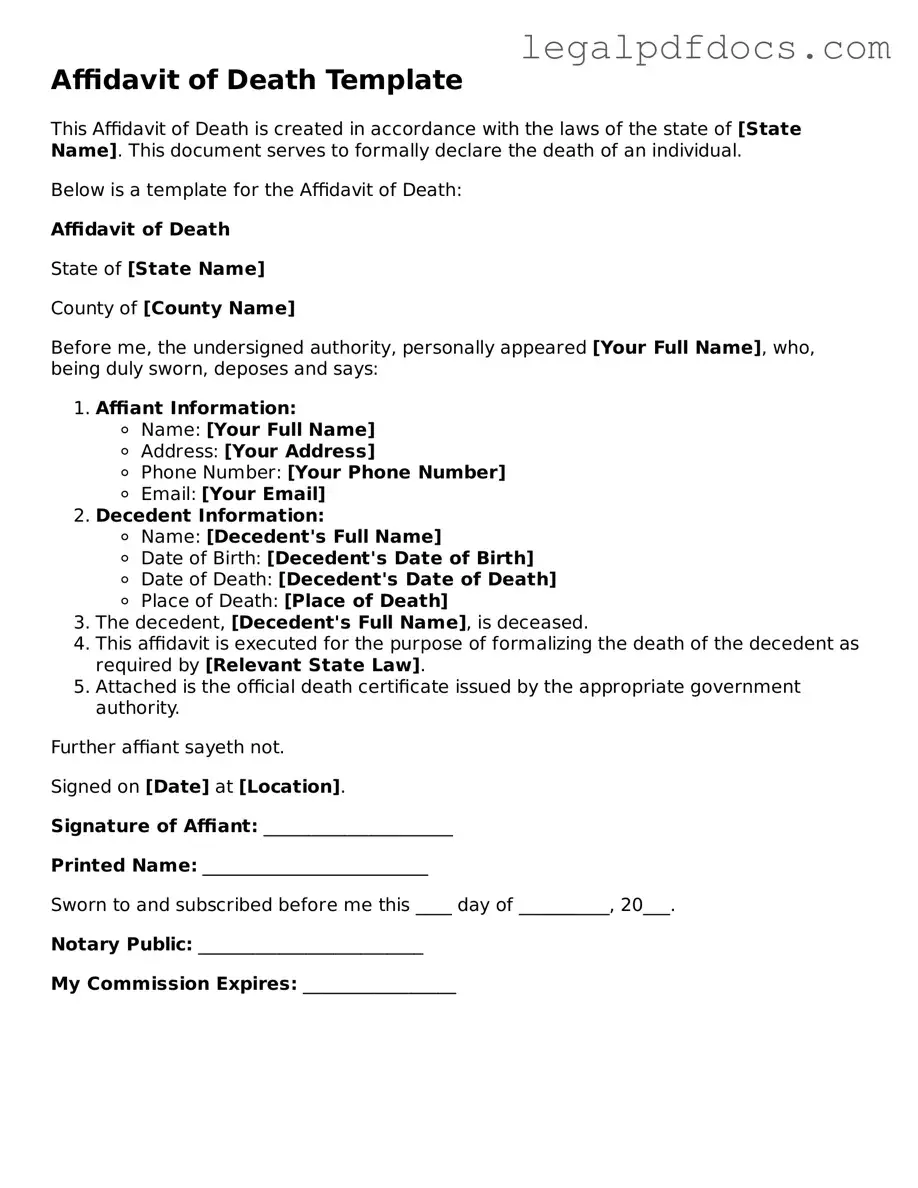Affidavit of Death Template
The Affidavit of Death form is a legal document used to officially declare an individual's death, often required for settling estates or transferring assets. This form serves as a vital tool for loved ones and legal representatives to navigate the complexities that follow the loss of a family member or friend. If you need to fill out this important form, click the button below to get started.
Open Affidavit of Death Editor Here
